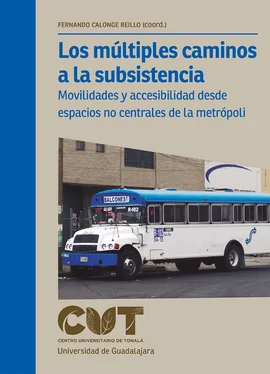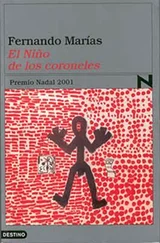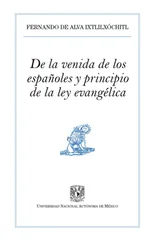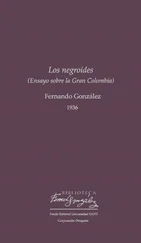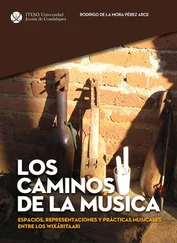En conjunto, los capítulos ofrecidos son una buena muestra de las realidades complejas y heterogéneas que viven los habitantes y hogares en las condiciones de no centralidad metropolitana. Los diferentes estudios de caso planteados ofrecen una amplia panorámica de las diversas formas que las clases no centrales del capitalismo tienen de desplazarse y de solventar su subsistencia a lo largo de la metrópoli contemporánea. Lejos de generar simplificaciones y esquematismos, a los que a veces se recurre desde el paradigma de las movilidades, los casos presentados sirven para recuperar la diversidad de formas de enfrentarse a la precariedad socioterritorial presente en las conurbaciones de países en desarrollo, como es el caso del amg.
Bibliografía
Avellaneda, P. G. (2008). Movilidad cotidiana, pobreza y exclusión social en la ciudad de Lima. Anales de Geografía, 28(2), 9-35.
Avellaneda, P. y Lazo, A. (2011). Aproximación a la movilidad cotidiana en la periferia pobre de dos ciudades latinoamericanas. Los casos de Lima y Santiago de Chile. Revista Transporte y Territorio, 4, 47-58.
Biba, G., Rosiers, F., Theriault, M. y Villeneuve, P. (2006). Big Boxes Versus Traditional Shopping Centers. Looking at Households’ Shopping Trip Patterns. Journal of Real Estate Property, 14(2), 175-202.
Böhm, S., Jones, C., Land, C. y Paterson, M. (2006). Introduction. Impossibilities of Automobility. En S. Böhm, C. Jones, C. Land y M. Paterson (eds.), Against Automobility (pp. 3-16). Malden: Blackwell.
Brindle, R. (2003). Kicking the Habit. Some Musings on the Meaning of Car Dependence. Road & Transportation Research, 12(3), 61-73.
Cahill, M. (2010). Transport, Environment and Society. Maidenhead: Open University Press.
Castillo, J. I. y López, L. (2009). Urban Retail Fabric and the Metro. A Complex Relation. Lessons from Middle-Sized Spanish Cities. Cities, 26, 141-147.
Cliffton, K. y Lucas, K. (2004). Examining the empirical evidence of transport inequality in de US and UK. En K. Lucas (ed.), Running on Empty. Transport, Social Exclusion and Environmental Justice (pp. 15-38). Bristol: Polity Press.
Diaz, L., Plat, D. y Pochet, P. (2013). The Puzzle of Mobility and Access to the City in Sub-Saharan Africa. Journal of Transport Geography, 32, 56-64.
Eibenschutz, R. y Carrillo, L. O. (2011). The Growth of Cities in Mexico. En T. Kaminer, M. Robles y H. Sohn (eds.), Urban Asymmetries. Studies and Project on Neoliberal Urbanization (pp. 84-98). Rotterdam: 010 Publishers.
Faiz, A. (2011). Transportation and the Urban Poor. Journal of the Institute of Transportation Engineers, 81(12), 40-43.
Faulkner, G. et al. (2010). What’s Quickest and Easiest? Parental Decision Making About School Trip Mode. International Journal of Behavioral Nutrition and Physical Activity, 7, 1-11.
Garland, A., Massoumi, M., Ruble, B. y Tulchin, J. S. (2007). Poverty and the Periphery. Cities in Latin America and the Former Soviet Union. Georgetown Journal of International Affairs, 8(2), 5-11.
Grieco, M. (2015). Social Sustainability and Urban Mobility: Shifting to a Socially Responsible Pro-Poor Perspective. Social Responsibility Journal, 11(1), 82-97.
Hernández, D. (2012). Activos y estructuras de oportunidades de movilidad. Una propuesta analítica para el estudio de la accesibilidad por transporte público, el bienestar y la equidad. EURE, 38(115), 117-135.
Hernandez, D. y Rossel, C. (2015). Inequality an Access to Social Services in Latin America. Space-Time Constraints of Child Health Check Ups and Prenatal Care in Montevideo. Journal of Transport Geography, 44, 24-32.
Heynen, N. (2006). Turfgrass Subjects. The Political Economy of Urban Monoculture. En N. Heynen, M. Kaika y E. Swyngedouw (eds.), In the Nature of Cities. Urban Political Ecology and the Politics of Urban Metabolism (pp. 124-136). Nueva York: Routledge.
Horner, M. W. et al. (2015). Do Aging Populations Have Differential Accessibility to Activities? Analyzing the Spatial Structure of Social, Professional and Business Activities. Travel Behavior and Society, 2, 182-191.
Hull, A. (2011). Transport Matters. Integrated Approaches to Planning City-Regions. Nueva York: Routlege.
Jouffe, Y. (2011). Las clases socioterritoriales entre movilidad metropolitana y repliegue barrial. ¿Tienen los pobladores pobres una movilidad urbana de clase? Revista Territorio y Transporte, 4, 84-117.
Kaufmann, V., Bergman, M. M. y Joye, D. (2004). Motility. Mobility as Capital. International Journal of Urban and Regional Research, 28(4), 745-756.
Kellerman, A. (2006). Personal Mobilities. Nueva York: Routledge.
Lau, J. C. (2011). Spatial Mismatch and the Affordability of Public Transport for the Poor in Singapore’s New Towns. Cities, 28, 230-237.
Le Vine, S., Lee-Gosselin, M., Sivakumar, A. y Polak, J. (2013). A New Concept of Accessibility to Personal Activities. Development of Theory and Application to an Empirical Study of Mobility Resource Holdings. Journal of Transport Geography, 31, 1-10.
Lindón, A. (1997). De la expansión urbana y la periferia metropolitana. Documentos de Investigación. Zinacantepec: El Colegio Mexiquense.
Lucas, K. (2004). Locating Transport as a Social Policy Problem. En K. Lucas (ed.), Running on Empty. Transport, Social Exclusion and Environmental Justice (pp. 7-14). Bristol: Polity Press.
Lucas, K., Halden, D. y Wixey, S. (2010). Transport Planning for Sustainable Communities. En T. Manzi, K. Lucas, T. L. Jones y J. Allen (eds.), Social Sustainability in Urban Areas. Communities, Connectivity and the Urban Fabric (pp. 121-140). Londres: Earthscan.
Lutz, C. y Lutz-Fernandez, A. (2010). Carjacked. The Culture of the Automobile and its Effect on Our Lives. Londres: Palgrave.
Masoumi, H. E. (2014). Urban Sprawl in Mid-Sized Cities of Mena. Evidence From Yazd and Kashan in Central Iran. Management Research and Practice, 6(2), 25-41.
Marquet, O. y Miralles-Guasch, C. (2014). Walking Short Distances. The Socioeconomic Drivers for the Use of Proximity in Everyday Mobility in Barcelona. Transportation Research A: Policy and Practice, 70, 210-222.
Miralles, C. y Cebollada, A. (2003). Movilidad y transporte. Opciones políticas para la ciudad. Madrid: Fundación Alternativas.
Nelson, S. (2010). Residential Intensification, Family Housing and Educational Privision. En T. Manzi, K. Lucas, T. L. Jones y J. Allen (eds.), Social Sustainability in Urban Areas. Community, Connectivity and the Urban Fabric (pp. 105-120). Londres: Earthscan.
Ohnmacht, T., Maksim, H. y Bergman, M. M. (2009). Mobilities and Inequality. Making the Connections. En T. Ohnmacht, H. Maksim y M. M. Bergman (eds.), Mobilities and Inequality (pp. 7-27). Farnham: Ashgate.
Plaut, P. (2004). Non-Commuters. People Who Walk to Work or Work at Home. Transportation, 31(2), 229-255.
Poticha, S. y Wood, J. (2009). Transit Oriente for All. Delivering Mixed-Income Housing in Transit Served Neighborhoods. En C. Curtis, J. L. Renne y L. Bertolini (eds.), Transit Oriented Development. Making it Happen (pp. 153-171). Farnham: Ashgate.
Roberts, B. R. y Wilson, R. H. (2009). Residential Segregation and Governance in the Americas: An Overview. En B. R. Roberts y R. H. Wilson (eds.), Urban Segregation and Governance in the Americas (pp. 1-20). Nueva York: Palgrave.
Rodrigue, J. P., Comtois, C. y Slack, B. (2006). The Geography of Transport Systems. Nueva York: Routledge.
Seo, S. E., Ohmori, N. y Harata, N. (2013). Effects of Household Structure and Accesibility on Travel. Transportation, 40, pp. 487-465.
Serulle, N. Y. y Cirillo, C. (2016). Transportations Needs of Low Income Population: A Policy Analysis for the Washington D.C. Metropolitan Region. Public Transportation, 8, 103-123.
Social Exclusion Unit (2003). Making the Connections. Final Report on Transport and Social Exclusion. Londres: Office of the Deputy Prime Minister.
Читать дальше
